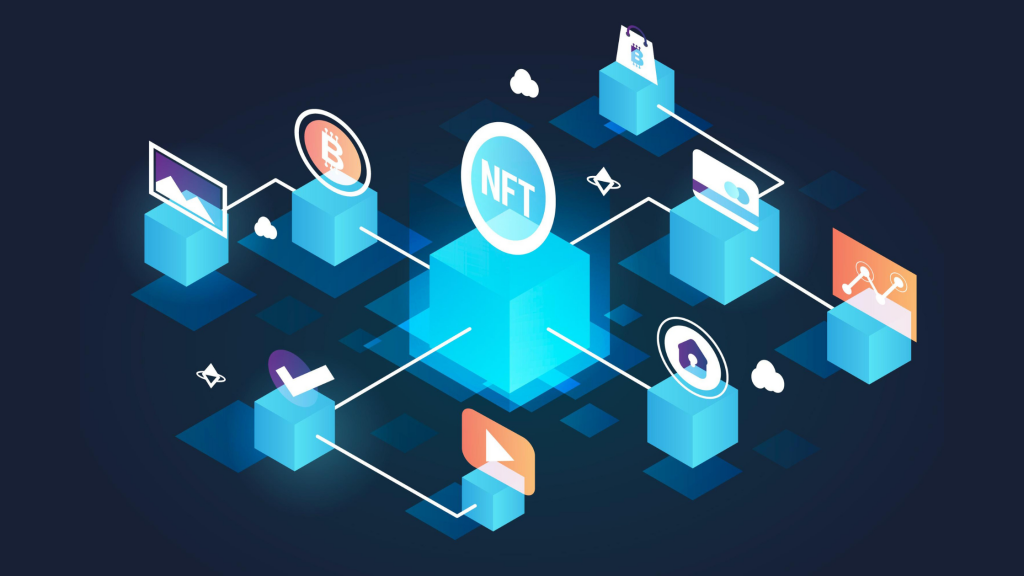By: Floryselle Lafradez;
What is NFT?
NFT, or non-fungible token refers to the wholly unique and non-transferable unit of data. This data is kept inside these eccentric works of art and digital goods and recorded on a digital ledger using blockchain technology to create ownership evidence. In the same way that tangible art has value, so do NFTs, which are collectible digital assets.

Is NFT safe?

An NFT can be stored on a virtual blockchain just like bitcoin transactions because it is an encrypted token. Due to the use of immutable distributed ledgers (or distributed ledger technology), which anyone on the network can observe, blockchains are by their very nature safe.
What’s the use of NFT?
NFTs have a variety of potential applications. For instance, they are the perfect means of digitally representing tangible things like art, real estate and many more. NFTs, which are based on blockchains, can also be used for identity management or to cut out middlemen and link artists with audiences. It also can eliminate middlemen, streamline transactions, and open up new markets.
Real-world objects like artwork and real estate can be presented by NFTs. These physical assets can be “tokenized,” which improves the efficiency of trading while lowering the risk of fraud.
How does NFT work?
NFTs use blockchain technology to function. Due to its unique design, every NFT has the potential for a variety of applications. For digitally portraying tangible assets like real estate and artwork, a digital asset management platform is the best option. Because NFTs are based on blockchains, they can act as identity management platforms in addition to eliminating middlemen and bringing artists and audiences together. NFTs can eliminate middlemen, increase transaction efficiency, and develop new markets.
NFTs are widely used by both cryptocurrency traders and art collectors. It can also be utilized for domain names, game products, investment collateral, and digital material.
Music, Tweets, GIFs, art, designer goods, and other tangible and intangible commodities are all included in NFT since they can be easily made from digital elements.
The impact celebrities have on NFTs
How the NFT craze is being driven by celebs. Additionally, we’ll discuss some of the most well-known celebrity-run tokens and give you a quick rundown of what the celebrities are providing.

The majority of celebrities who have their own NFTs view the tokens as a method to strengthen their bond with followers. For instance, Snoop Dogg produced digital artwork that pays homage to the concepts and images that characterized the earlier phases of his career. He keeps his place at the forefront of culture by incorporating his distinctive style into the digital sphere.
Celebrity NFTs have the potential to raise enormous sums of money for deserving philanthropic organisations.
For instance, Ellen Degeneres sold NFTs of her sketchy cat drawing and raised more than $33,000 for a food relief group.
Musician Shawn Mendes supported emerging musicians using the money from his NFT collection.
Paris Hilton gave Meals on Wheels, a nonprofit that provides food for elderly people in need, the proceeds from her NFTs.
These illustrations demonstrate how well-intentioned people might utilize celebrity NFTs to finance significant social endeavours.
Some celebrities might be buying NFTs as an investment, thinking that by supporting a collection, the price and value of the tokens they currently own will rise. It’s important to keep this possible motivation in mind when thinking about celebrity NFTs.
Celebrity NFTs are something to think about if you enjoy digital art and wish to donate to worthy organizations. Numerous celebrities have supported or started initiatives, and they were successful in raising millions of dollars. You can develop a profitable habit of investing in celebrity tokens with a little bit of research and a constant understanding of the inherent volatility of NFTs.
Also, the Face of Luxury Brand Marketing Is Changing Due to NFTs
Gucci has created a digital shoe platform as part of its attempt to integrate NFTs. The startup sells digital sneakers for about $12, which is far less expensive than purchasing physical goods. Brand access is made possible without true desaturation. As a result, the brand is exposed to new markets through innovative marketing strategies.
Additionally introducing their own NFT lines, Louis Vuitton and Burberry offer digital clothes for video games. These partnerships were pretty creative, given that premium fashion firms and video games typically don’t seem to have the best demographic alignment.
Fashion firms have a huge potential to maximize their profits by selling their products on digital platforms as the metaverse’s dawn draws nearer. This strategy enables businesses to profit from consumers’ emotional attachment to their possessions as well as their desire to express individuality and status through their purchases of goods.
Having said that, treat NFTs as you would any investment: do your homework, understand the dangers, including the possibility that you may lose all of your investment money, and if you decide to proceed, exercise good judgment. (The writer is a social media manager for Knobin Digital, www.knobin.com and Classy Cats, www.classycats.io ).
[END]




